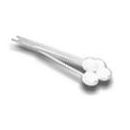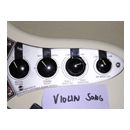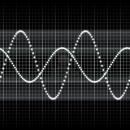Buenos días.
Este viernes voy a hacer una grabación con mi nuevo previo, un ART Digital MPA. Este aparato trae selector de impedancia (entre 150 y 3000 ohmios) para poder adaptarse a las distintas resistencias de los diferentes micros.
El caso es que los micrófonos que voy a usar tienen las siguientes características de impedancia:
Output Impedance 50 ohms
Rated Impedance 1000 ohms
Suggested Load Impedance > 250 ohms
Según el fabricante, debería poner el selector en cualquier posición mayor que 250. Entre 250 y 3000 ohmios hay un gran trecho. Todo lo que pase de ahí, ¿son diferentes "colores"?
He leído en algún sitio que lo que hay que hacer es "casar" la impedancia del micro exactamente con la del previo, pero otros dicen que eso es precisamente lo que hay que evitar (hablaba algo de pérdida de dbs).
El fabricante del previo dice esto, pero lo encuentro demasiado general, muy poco específico y riguroso desde un punto de vista científico:
"Las bajas impedancias rechazan el ruido producido por el cableado y apagan la resonancia del micro. Las impedancias bajas tienden a concentrar más el sonido. Las impedancias altas proporcionan un sonido más abierto"
¿Alguien podría explicarme la teoría respecto a esto o proporcionarme algún enlace?
Un saludo.
Este viernes voy a hacer una grabación con mi nuevo previo, un ART Digital MPA. Este aparato trae selector de impedancia (entre 150 y 3000 ohmios) para poder adaptarse a las distintas resistencias de los diferentes micros.
El caso es que los micrófonos que voy a usar tienen las siguientes características de impedancia:
Output Impedance 50 ohms
Rated Impedance 1000 ohms
Suggested Load Impedance > 250 ohms
Según el fabricante, debería poner el selector en cualquier posición mayor que 250. Entre 250 y 3000 ohmios hay un gran trecho. Todo lo que pase de ahí, ¿son diferentes "colores"?
He leído en algún sitio que lo que hay que hacer es "casar" la impedancia del micro exactamente con la del previo, pero otros dicen que eso es precisamente lo que hay que evitar (hablaba algo de pérdida de dbs).
El fabricante del previo dice esto, pero lo encuentro demasiado general, muy poco específico y riguroso desde un punto de vista científico:
"Las bajas impedancias rechazan el ruido producido por el cableado y apagan la resonancia del micro. Las impedancias bajas tienden a concentrar más el sonido. Las impedancias altas proporcionan un sonido más abierto"
¿Alguien podría explicarme la teoría respecto a esto o proporcionarme algún enlace?
Un saludo.













